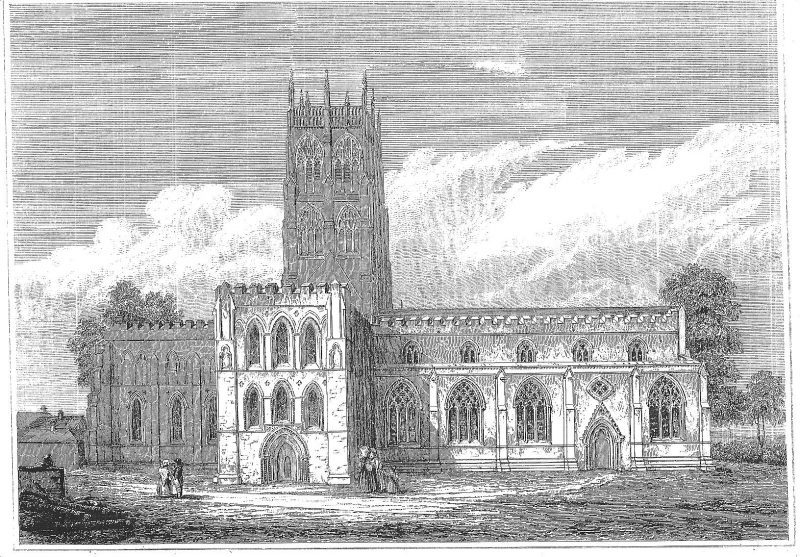
Today’s picture is taken from George Poulson’s History of Holderness and is an illustration of Hedon church as seen from the north. As G.E. Scott’s restoration of Hedon church was not carried-out until the 1860s Poulson’s illustration shows the church prior to that restoration; although the more obvious changes to the fabric, such as the installation of a rose/wheel window in the south wall of the south transept, are best seen on the south facade of the church.
Hedon church is in the highest category of Heritage designation at Grade 1, as are the other large churches of the region listed in the previous blog (Heritage at Risk 7). However, its current condition is described by English Heritage as ‘poor’ and suffering from ‘slow decay’ especially affecting the north transept and south aisle stonework; the south transept and chancel south aisle roofs are also in need of repair. The other large churches listed yesterday are not in the Heritage at Risk register.
Clearly the physical maintenance of these huge buildings will be ongoing, over centuries the building stone, brought to the site at great expense, will weather and deteriorate, whether just on the surface or throughout each block. Yet again the question is asked, ‘who should pay?’ to which my standard answer is ‘the state’. Although the Church of England is a wealthy organisation defined objects of the nation’s heritage should not be maintained by them alone – although some state funding is forthcoming by virtue of what used to be called the ‘Redundant Churches Trust’. As Hedon church is not redundant there should be a mechanism whereby Church and State share responsibility so long as established ground rules are accepted by the C. of E.
Hedon church does not benefit from being central to a flourishing urban environment as is the case with Holy Trinity and Beverley Minster. Also it is never open, this being something an agreement such as above should address.